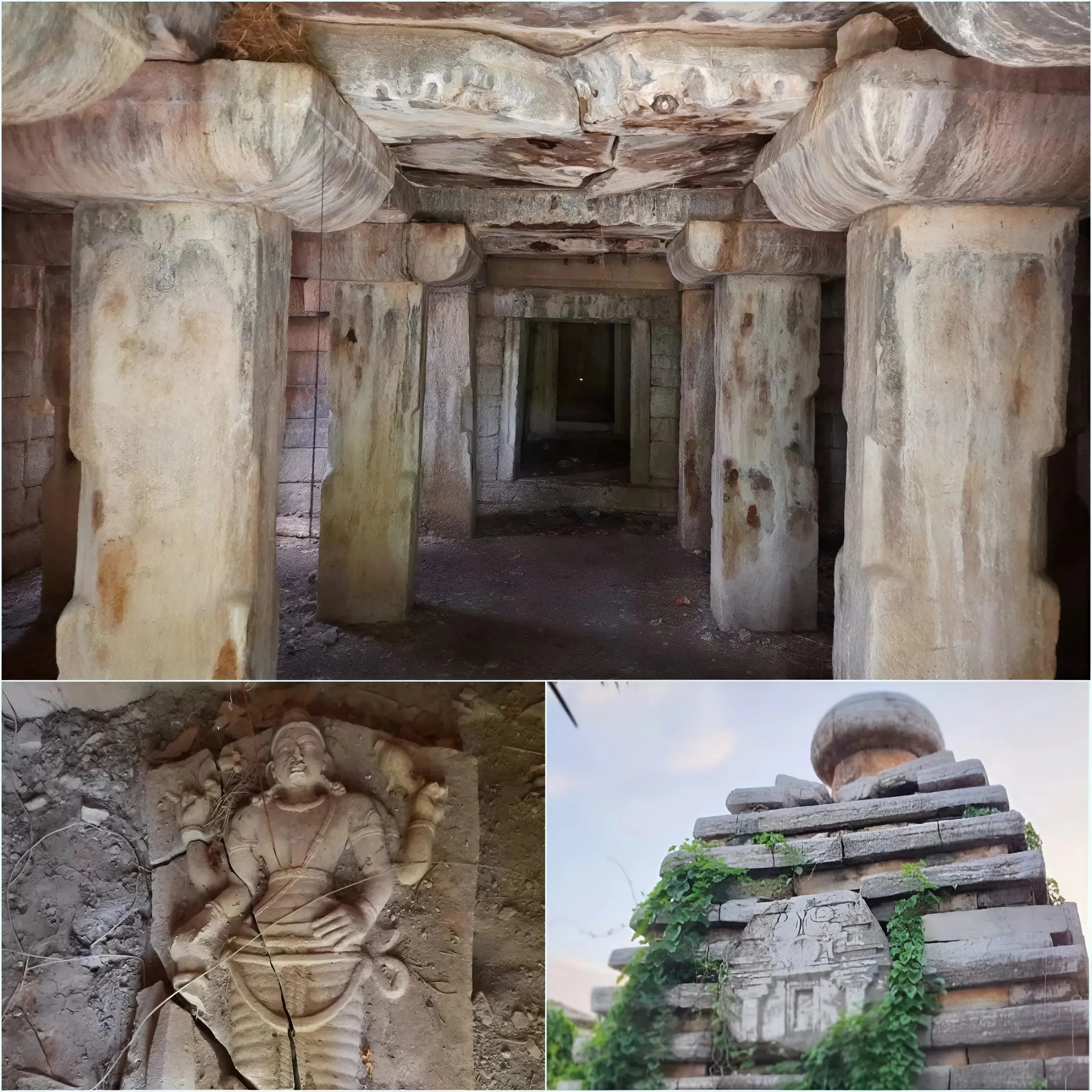
Archaeologists from the Public Research Institute of History, Archaeology, and Heritage (PRIHAH), led by Dr. M A Srinivasan and S Ashok Kumar, have recently unearthed two temples dating back to the Badami Chalukya era in Mudimanikyam village, situated in Nalgonda district along the Krishna River in Telangana, India. These temples, dating back at least 1300 years, mark a significant period in Hindu dynastic history, particularly during the ascendancy of the Badami Chalukyas under Pulakeshin II, also known as Immadi Pulakeshi, after the decline of the Kadamba kingdom of Banavasi.
The temples, remarkably well-preserved, exhibit a blend of architectural styles typical of the era. One temple showcases the Kadamba nagara style, characterized by a pyramid-shaped shikara adorned with rising steps and topped by a pinnacle kalasha. The other temple reflects elements of Rekha nagara architecture, featuring a northern Indian shikhara with a slightly curved tower.
During their excavations, archaeologists discovered a panavattam in one temple’s sanctum sanctorum, serving as the base for a Shiva lingam. In the other temple, they uncovered an idol of Vishnu, adding to the significance of these findings.





